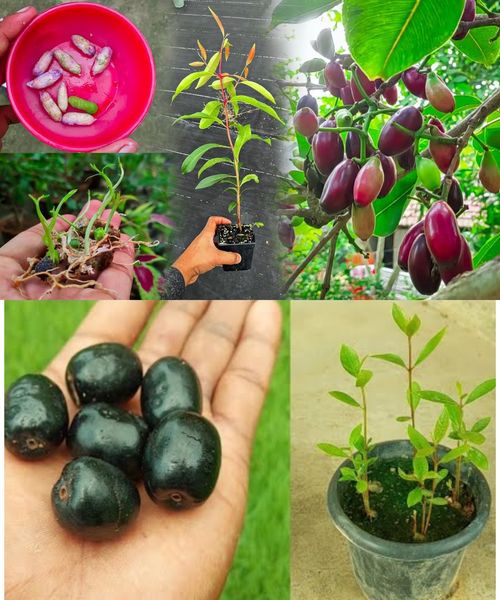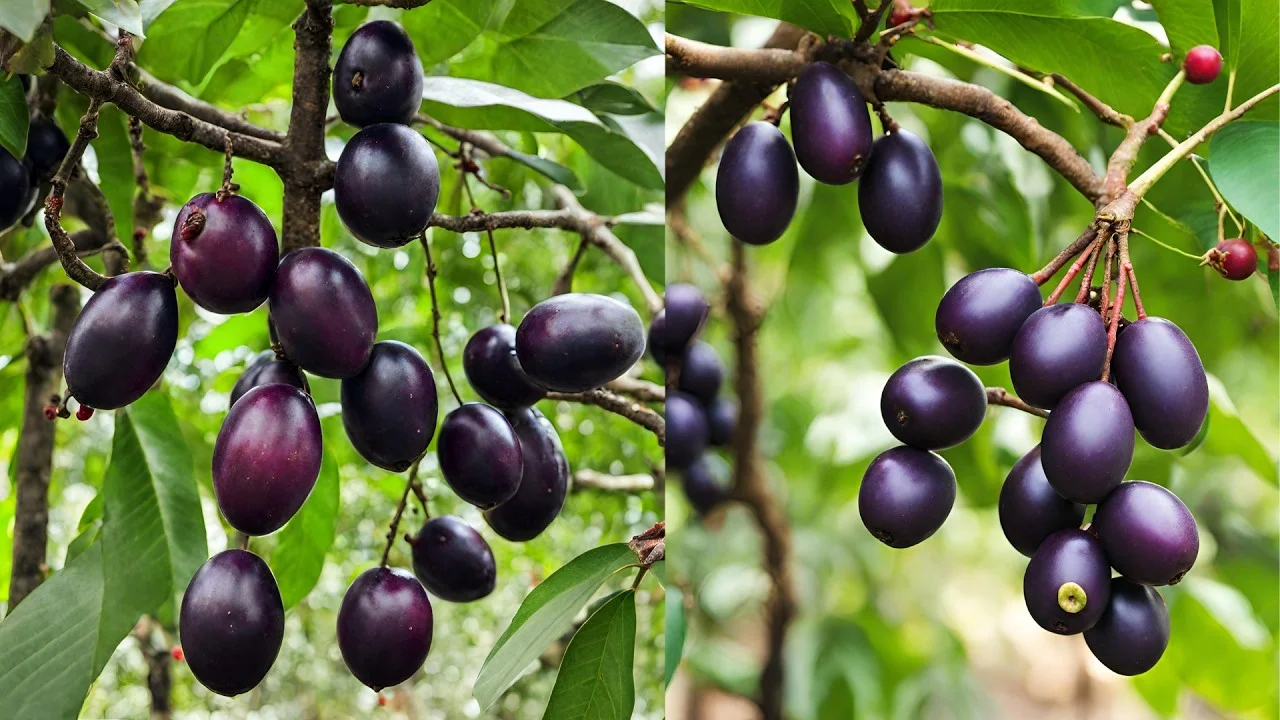Jamun, also known as Java Plum or Syzygium cumini, is a tropical fruit tree cherished for its tasty, nutritious berries. Growing Jamun from seeds is a gratifying process, though it requires patience, as it can take several years to bear fruit. Here’s a step-by-step guide to help you grow Jamun from seeds:
Step 1: Obtain and Prepare Seeds
- Choose a Fruit: Select a ripe Jamun fruit from a market, looking for one that’s deep purple and fragrant.
- Extract Seeds: Cut the fruit open and remove the seeds. Rinse them thoroughly to remove any pulp.
- Dry the Seeds: Let the seeds dry on a paper towel for a day or two to prevent mold during germination.
Step 2: Prepare the Planting Medium
- Soil Type: Jamun trees thrive in well-draining, loamy soil. A mix of garden soil, compost, and sand is ideal.
- Containers: Use small pots or seed trays with drainage holes to start the seeds.
Step 3: Plant the Seeds
- Sowing Depth: Plant the seeds 1-2 inches deep, spaced 2-3 inches apart if using a seed tray.
- Watering: Water the soil thoroughly after planting, keeping it moist but not waterlogged.
Step 4: Provide Optimal Conditions
- Light: Place the pots in a warm spot with bright, indirect sunlight. Jamun seeds need warmth and light for germination.
- Temperature: Maintain a temperature between 70-85°F (21-29°C) for best results.
Step 5: Germination and Seedling Care
- Germination Time: Jamun seeds usually germinate within 3-6 weeks. Keep the soil moist and be patient.
- Caring for Seedlings: After seedlings emerge, continue to provide bright light and regular watering. Once they reach 4-6 inches in height with several true leaves, they’re ready for transplanting.
Step 6: Transplanting Seedlings
- Timing: Transplant the seedlings outdoors after they are well-established and all risk of frost has passed.
- Planting Site: Select a sunny location with well-draining soil, as Jamun trees prefer full sunlight and room to grow.
- Spacing: Plant the seedlings 10-15 feet apart to accommodate their large canopy.
Step 7: Care for the Jamun Tree
- Watering: Water regularly, especially during dry spells. Allow the soil to dry slightly between watering to prevent root rot.
- Fertilizing: Feed with a balanced fertilizer every few months to promote healthy growth.
- Mulching: Apply mulch around the tree’s base to retain moisture and suppress weeds.
Step 8: Pest and Disease Management
- Pest Monitoring: Keep an eye out for pests like aphids or scale insects. Use organic pest control if necessary.
- Disease Prevention: Ensure good air circulation and avoid overhead watering to prevent fungal infections.
Step 9: Patience and Harvesting
- Time to Fruit: Jamun trees grown from seeds usually take 4-6 years to bear fruit, so patience is essential.
- Harvesting: Pick the fruit when it turns deep purple and is slightly soft. Fully ripe Jamun has a sweet, tangy flavor.
Conclusion
Growing Jamun from seeds is a rewarding project, though it requires time and care. By following these steps and being patient, you’ll eventually enjoy the sweet taste of homegrown Jamun fruit from your very own tree!

